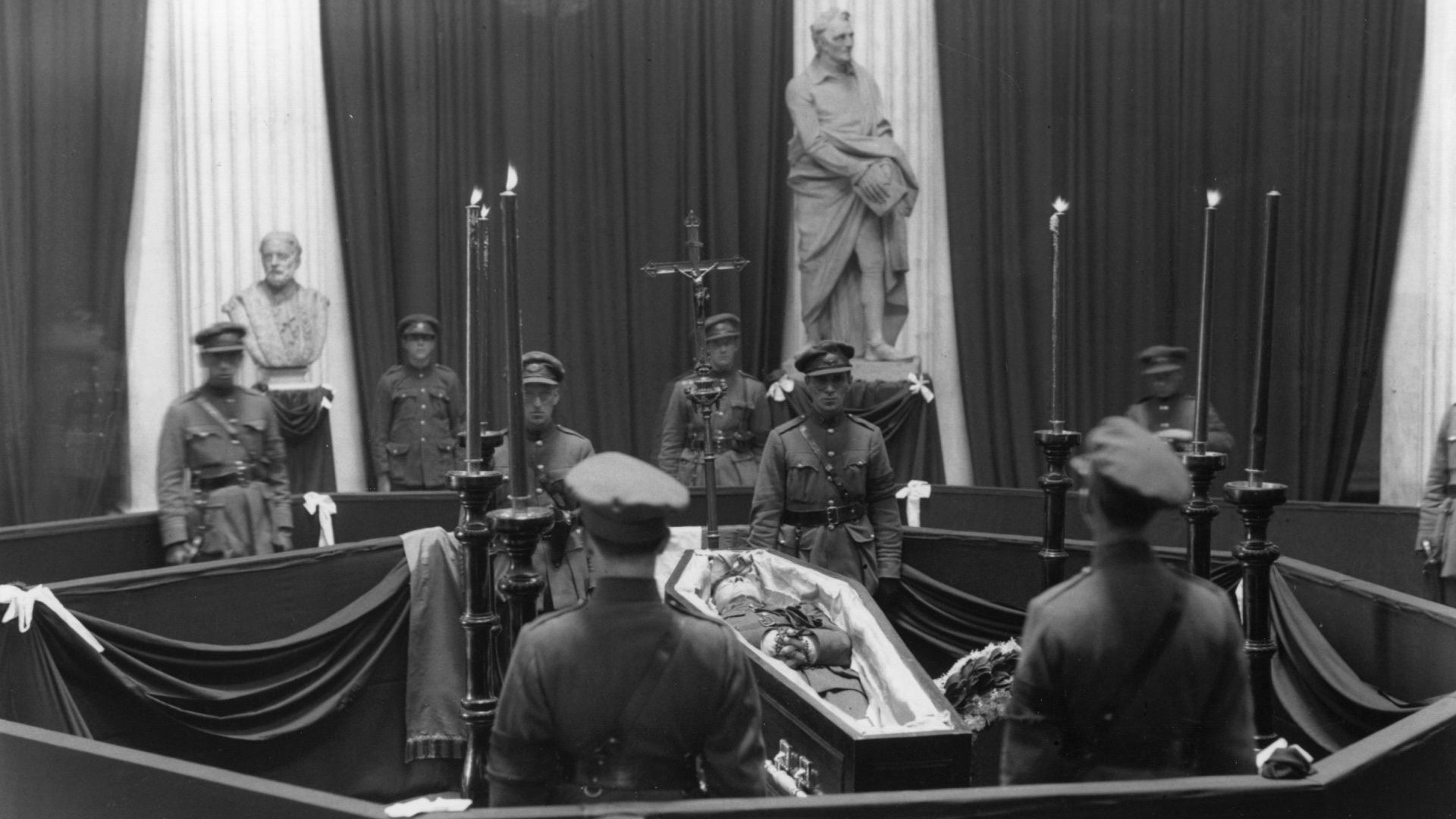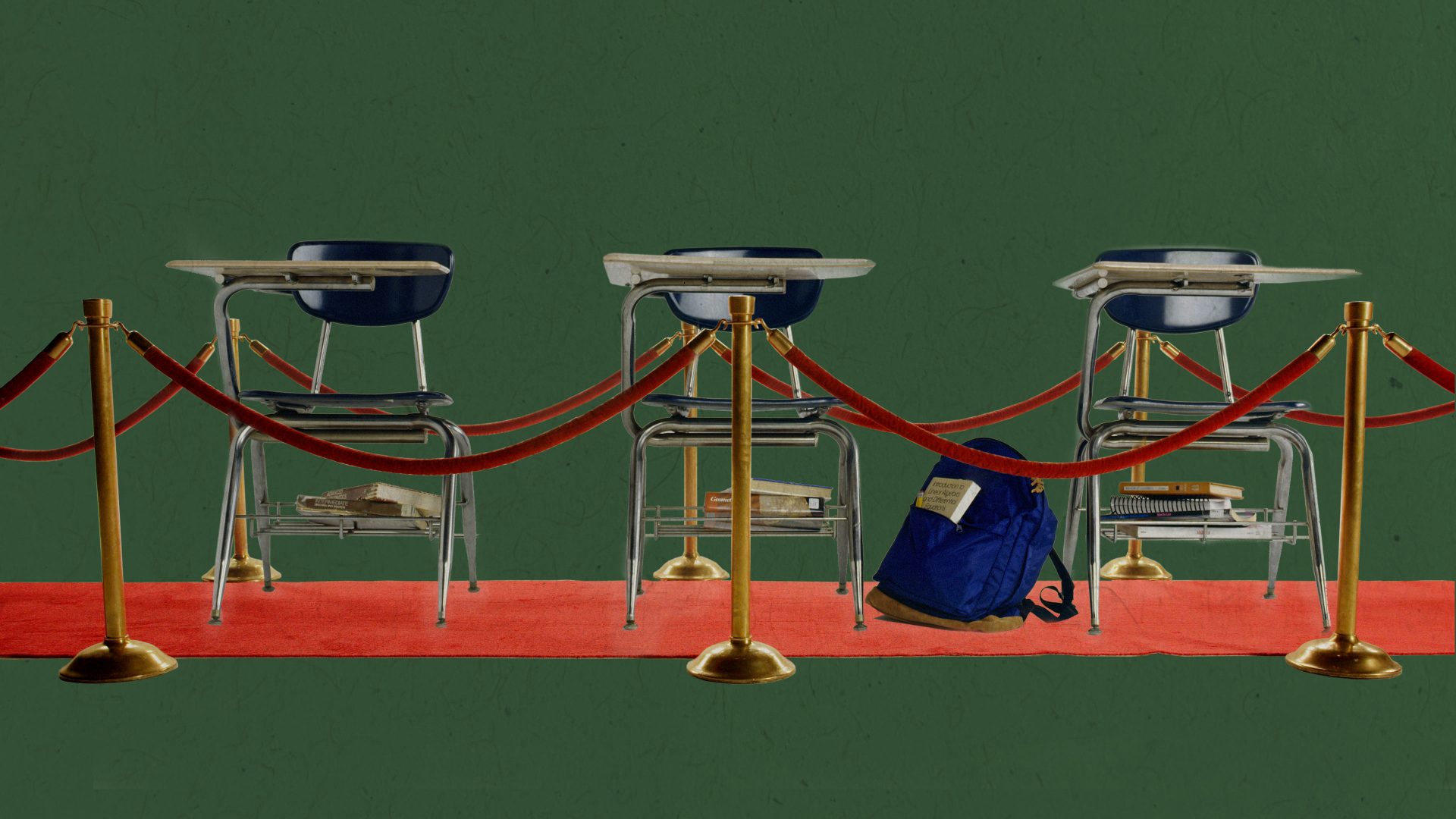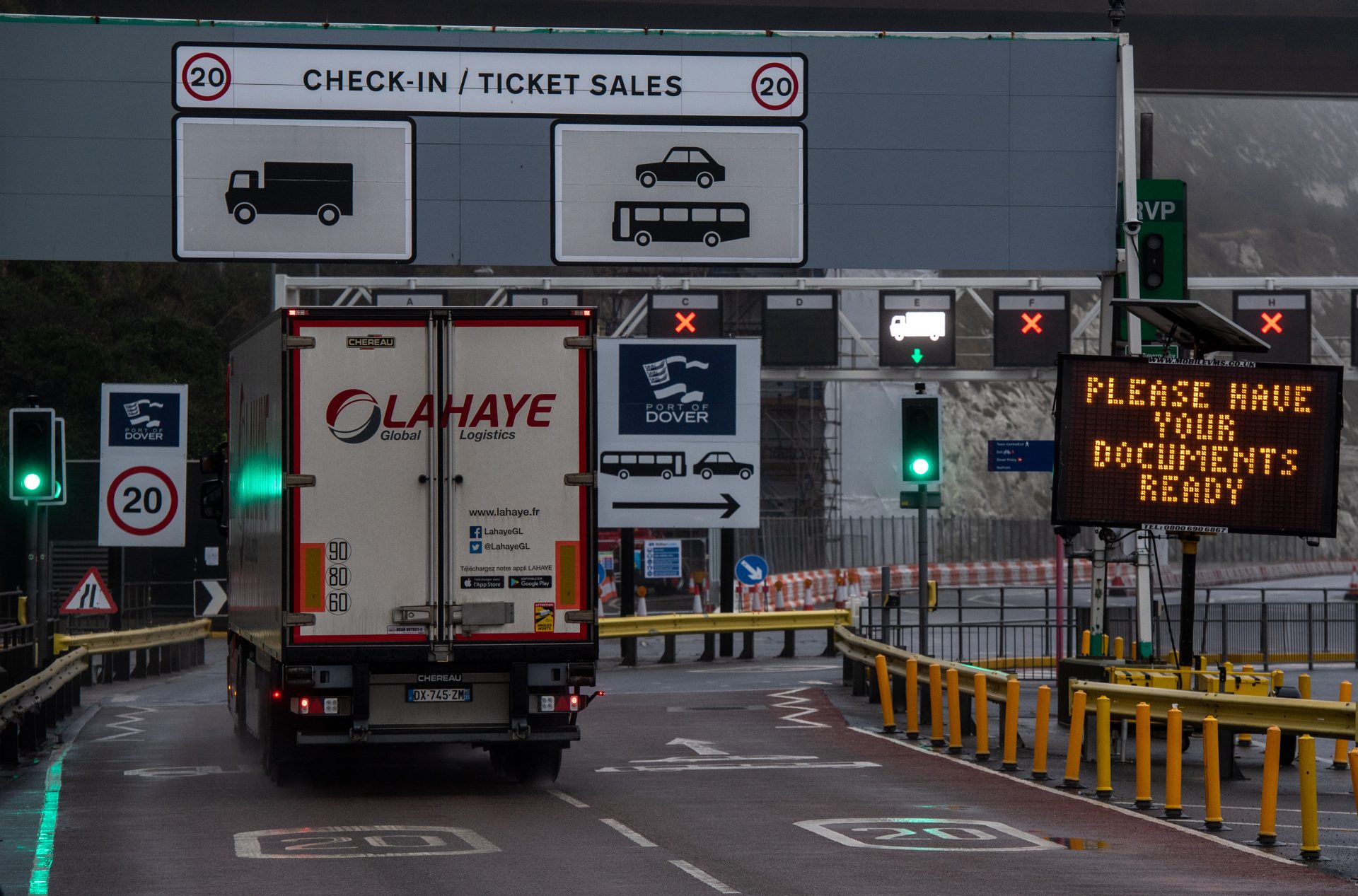On August 22 1922, in the village of Béal na Bláth, County Cork, there was an ambush. A firefight erupted involving more than 30 men, who fought with rifles and machine guns. In the end there was only one fatality – Michael Collins, the Irish statesman, hero of the Easter Rising and one of the founders of the modern Irish state. It seems that his 25 bodyguards were unable to protect him.
Remarkably for a man of such importance, in the aftermath of his death there was no inquiry, inquest or autopsy. There is no record of any forensic or ballistic investigation, or even a death certificate for the dead man. Collins’s rifle, his hat and even the car he was travelling in all vanished.
Michael Collins is perhaps Ireland’s most important historical figure; the subject of film, books and song. At the time of his death, he was one of the most powerful and famous Irishmen in the world, a man whose vision and force of personality was driving Ireland forward to independent statehood. And yet, as we mark the centenary of his assassination, a curiously incomplete picture emerges of his killing.
Collins was only 31 when he was shot in the head. The civil war was raging, as rival factions in Dublin fought over the decision by Irish leaders, led by Collins, to sign the Anglo-Irish treaty with London. Collins himself was the IRA’s former director of intelligence, and he had been part of the team that negotiated that treaty, which brought into existence the 26-county Irish Free State. Collins claimed the treaty gave him the “freedom to achieve freedom”. But for other Irish nationalists, it was an unacceptable compromise.
Collins’s father, a mathematician also named Michael, had been a member of the Irish Republican Brotherhood. A passionate, angry child, young Michael also joined. He was also clever, and eventually moved from County Cork to London, where he took a job in finance. There, from 1909 onwards, he spied on the inner workings of the British civil service, meeting Lloyd George, the then-finance minister, through mutual friends.
After a spell living in New York, where he also worked in financial services, Collins returned to Ireland, where he took part in the 1916 Rising. He became minister of finance in Sinn Féin’s rogue parliament of 1918, using his financial experience to raise the funds to pay for Ireland’s war of independence. He eventually rose to become president of the provisional government of Southern Ireland and commander-in-chief of the national army.
He dreamed of a self-sufficient Ireland, free of economic manipulation by Britain. Ireland at the time was in a severe economic decline. Collins wanted to reverse the spread of the slums, end emigration and institute a society along Fabian socialist lines. He was a militant and a gifted political visionary.
In The Path to Freedom, a collection of essays and speeches, Collins wrote: “We are a small nation. Our military strength in proportion to the mighty armaments of modern nations will never be considerable. Our strength as a nation will depend on our economic freedom, and upon our moral and intellectual force. In these, we can be a shining light in the world”.
It was in pursuit of this end that Collins was travelling to his home county of Cork in August 1922 to meet the nationalist leadership who opposed the Anglo-Irish Treaty that he had negotiated. Collins’s aim was to broker a peace deal and end the civil war.
His convoy that day included a motorbike outrider, a Crossley Tender car with a mounted Lewis machine gun, an open-top yellow Leyland 8 car in which Collins was travelling and an armoured car with another machine gun. The ambush party numbered between five and 10. Yet remarkably it was Collins, with his heavily armed convoy consisting of 25 men, who was shot and killed.
After his death, his convoy took six hours to travel the 30km back to Cork, a journey that should have taken no more than an hour. Collins’s body was then brought to Shanakiel hospital, where his body was attended by, among others, a matron named Eleanor Gordon.
Some reports even suggest that she saw signs of a wound in Collins’s back, a scorch-mark on his tunic. If true, this would directly contradict all official reports. The implications of this are potentially very dark. Did one of his own men shoot Michael Collins?
There was no hint of that possibility in the ensuing newspaper coverage. The story in the first editions claimed that Collins had been foolhardy, telling his men “stop and we’ll fight ’em,” before charging off in pursuit of his attackers armed with a rifle. Reports stated that, having been shot, Collins’s final words had been “forgive them”. This seems highly implausible. He had been killed instantly by a bullet to the head.
A service was held in Dublin on a scale that amounted to a state funeral. But although Dublin’s streets were thronged with almost half a million people, who had come to see the man who had done so much to shape their new nation, the politics of Ireland didn’t stop.
The Irish government reconvened under WT Cosgrave, who was elevated to become president of the Executive Council. Cosgrave supported Collins’s Anglo-Irish agreement, and was determined to stamp out sections of the nationalist movement who opposed it. He instituted a harsh Public Safety bill, emergency legislation that permitted the execution of anyone “taking part in or aiding and abetting attacks on the National Forces”. It was a development that would have horrified Collins.
Despite the outrageous circumstances surrounding his assassination, no inquest was permitted into Collins’s death, by order of Major General Emmet Dalton, Collins’s second in command who was present when he was killed. An autopsy was performed by Oliver St John Gogarty, but the results went missing. One theory is that his medical report was destroyed by fire along with other sensitive documents in 1932. No records remain.
As for his personal possessions, in 2009 a Webley revolver believed to have been Collins’s service weapon was auctioned off in Dublin for €72,000, yet the Lee Enfield rifle he was using when he was killed has never turned up. His open-top, yellow car was immediately shipped back to the Leyland factory in England, where it was cleaned, reupholstered and, within a month, sold to a big game hunter in Kenya. Which means there isn’t a single bit of forensic, ballistic or medical evidence from the ambush. Not one bullet.
Rumours began to fill the vacuum left by the absence of information. One story claimed that Collins had been drunk when he’d died, a story based on the report that his convoy had stopped at a local pub to ask for directions.
Another version of events began to form around the suggestion that Collins was a back-room boy, a pen-pushing fixer who had never seen combat and didn’t recognise the danger he was in. He was certainly an effective administrator, but he was also a trained rifleman who fought in the Rising of 1916 and would have seen intense fighting in Dublin. Though not a career soldier, Collins was a hardened combatant.
Emmet Dalton, a supporter of the Anglo-Irish Treaty and a major general in the Irish military, was in Collins’s convoy that day. He had also served in the British military during the first world war, and during that period he had come into contact with British intelligence. For this he fell under suspicion. He didn’t help himself by sticking to the outlandish theory that a ricochet was responsible for Collins’s head wound.
The finger was also pointed at Sonny O’Neill, one of the ambush party who is often referred to as a “trained marksman and sniper”, though there is no evidence of him having received any such training. A veteran of the first world war, O’Neill was captured by the enemy and German records show that his wounds were so severe that they left him with severe, permanent damage to his right arm. That’s hardly an advantage for a skilled assassin.
You will find a lot of Irish people who are sure they know what happened to Michael Collins. Invariably an elderly relative will have their own take that has been passed down from somewhere they can’t quite remember.
But the absence of any real evidence means that any analysis can’t be about the ambush or the ballistic facts. The story really has to be about versions of the story that have emerged since then.
A host of books have been written about Collins’s death, all sure of certain details over others. For me, the most important of these is 2009’s The Assassination of Michael Collins by SM Sigerson. Like me, she’s Irish-American and that gives her an outsider’s perspective.
She does two things that make her work indispensable. First, she takes every eyewitness account from both sides and cross-references them to see where they contradict each other. This painstaking work allows you to see not only who is making stuff up, but also to identify the more reliable witnesses. She does something else that’s vitally important. She reduces the mystery of Béal na Bláth to one acute observation: “Twenty-five professional soldiers travelled out as escort to the commander-in-chief. Following an encounter with a force of five men, with vastly inferior arms, they brought the C-i-C back dead. There were no other fatalities or serious injuries on either side.”
But why kill Collins at all? There are plenty of reasons. Several very sensitive situations had developed on the island of Ireland at the time and Collins was at the centre of all of them.
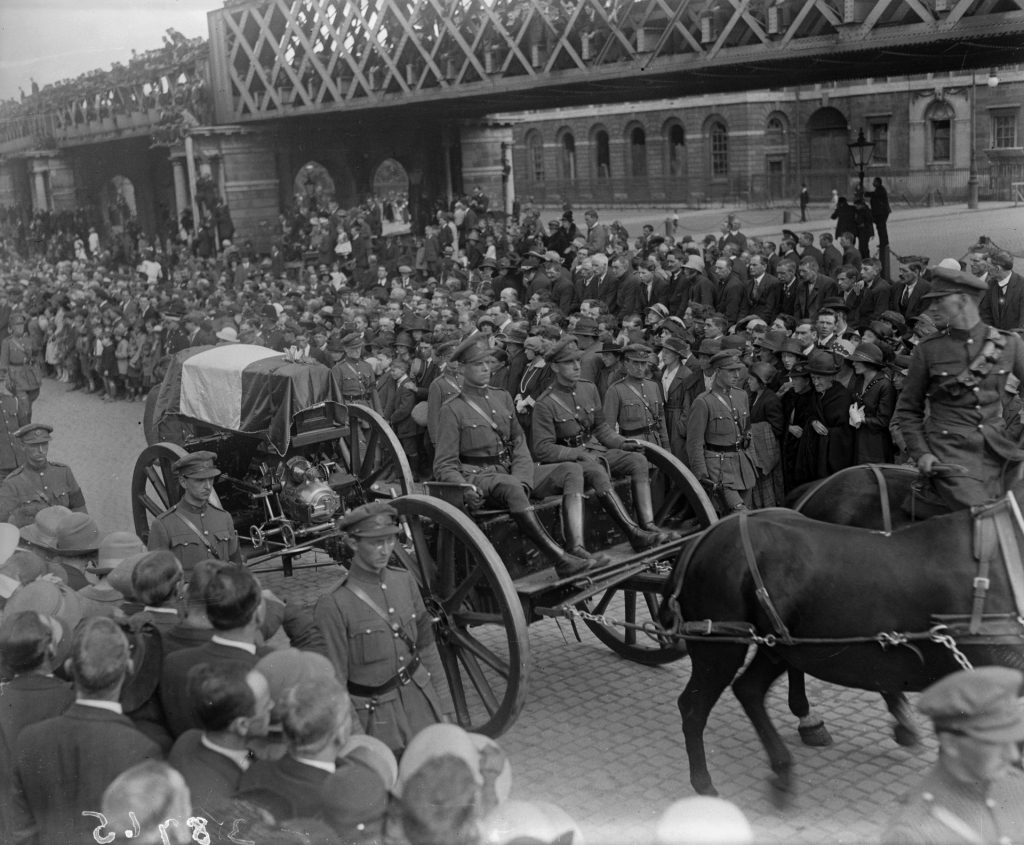
Agency/Getty
In Dublin, for example, the anti-treaty IRA was working together with the pro-treaty National Army in response to the pogroms of Catholics by the ruling Protestant majority and their policing arm, the B Specials. Collins’s decision to bomb the anti-treaty IRA’s centre of operations – the Four Courts buildings in Dublin – was a strike that had triggered the Irish civil war.
Meanwhile in the north, 1922 was the bloodiest year in Northern Irish history, and the head of the British army in the north, Henry Wilson, was calling for Britain to re-invade the south. Wilson was assassinated by the London IRA on June 22 in an attack widely assumed to have been ordered by Collins. The killing enraged the British.
What’s more, the historian John M. Regan has written that Collins was planning a military offensive on Northern Ireland from early January 1922. Ernest Blythe, the minister for trade, issued a memo stating that “all military operations in the North should come to an end and that all future pressure on Northern Ireland should be normal and constitutional”. This was in direct opposition to Collins’s plans.
Which meant that, by early August, Collins had several targets on his back. The anti-treaty side felt betrayed by the Four Courts attack, the British knew he could get to them, and senior members of his own cabinet were against military actions in the North.
With Collins dead, and after a savage civil war that saw many of the country’s greatest figures executed, the Ireland that emerged was very different from the republican ideal and certainly far from that envisioned by Collins himself.
The Catholic Church dominated education, social behaviour and morality with its austere doctrine, often with the state’s approval. Women became second-class citizens, a cruel blow after the egalitarian hope of 1918 when they could vote for the first time. North and south developed as Protestant and Catholic states, isolated from each other until the Troubles of the 1960s and 70s proved the futility of ignoring civil rights.
This mounting sectarianism would have dismayed Collins. Despite his support of nationalists in the North, Collins was not an overt Catholic – his republican family background, from the United Irishmen to the Fenians to the Irish Republican Brotherhood, meant he understood the fallacy of identity politics based on religion. He even wrote a paper condemning the church in 1909 for its anti-republicanism, suggesting the hierarchy should be “exterminated”.
Collins also lived in London for 10 years between 1906 and 1915. He absorbed the Gaelic League ideas of Douglas Hyde but also associated with British high society, including Fabian socialists like Moya and Crompton Llewelyn-Davies – high-profile Irish republicans – and the artist John Lavery. He would certainly not have involved himself in European fascism as some of his colleagues later did.
Collins lived and died as a member of Sinn Féin. Ireland may still have some catching up to do with Collins’s vision, but until that day comes, we can do one thing to respect his memory. Let’s solve the mystery of his death.
A new inquiry must take place. This will involve exhuming Collins’s body from Glasnevin and doing a proper forensic analysis. Only then can we assess the ballistic evidence and identify the manner of his death. Exhuming Michael Collins is a controversial topic in Ireland. Many see it as dredging up the divisive bitterness of the civil war. Others think it is disrespectful to Collins, that it goes against the Irish tradition of respecting the dead.
The authority to exhume lies with the state alone and not family members, nor the political parties who claim ownership of him. Taoiseach Micheál Martin has already ruled out a state inquiry. Even so, he will attend the commemoration at Béal na Bláth with Táinaiste Leo Varadkar, itself a historic occasion as this represents the two sides of the civil war, remembering Collins for the first time.
But the Taoiseach is wrong. Ruling out a state inquiry and forensic analysis of the facts ignores the crucial importance for Ireland of obtaining clarity on the most important political killing in its history. It is also unfair to those tarred by the rumours that grew out of this mystery. Emmet Dalton. Sonny O’Neill. Why should the death of Michael Collins be the source of speculation for another 100 years?
Paddy Cullivan is a historical entertainer. He is performing The Murder of Michael Collins throughout August and September – click here for details.
Born into Irish republicanism, and slain at 31
1890 Michael Collins is born near Clonakilty, County Cork.
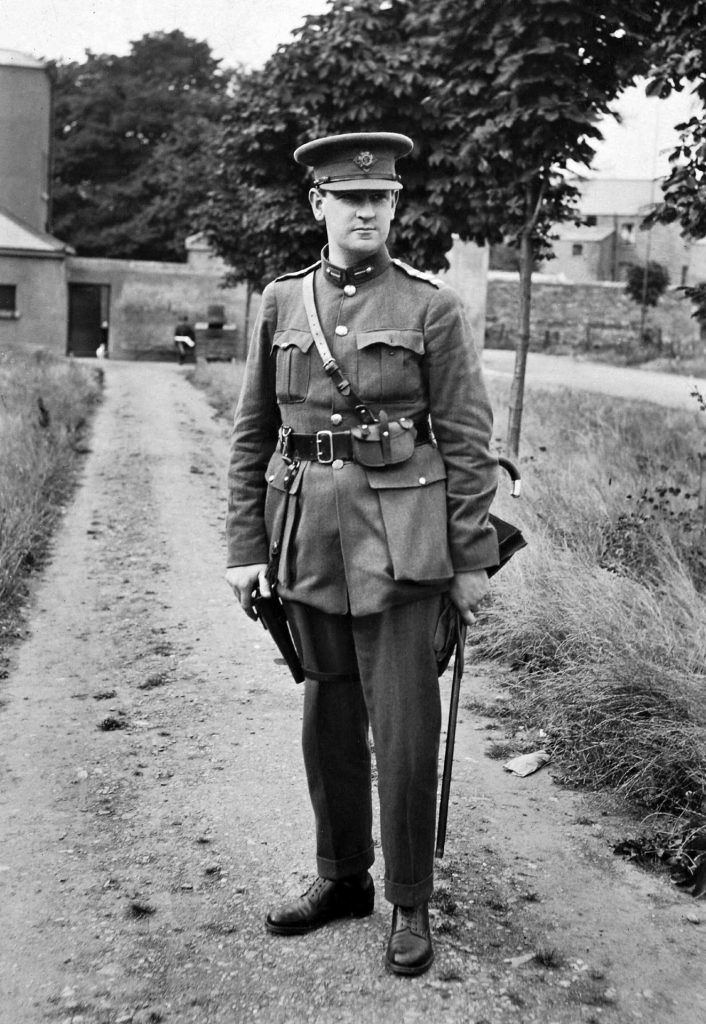
1910 Moves to London to work in a firm of stockbrokers and study at King’s College London.
1913 Two nationalist groups, the Irish Citizen Army and the Irish Volunteers, are formed in Ireland. These two groups would later launch the Easter Rising of 1916.
1915 Moves to New York City to work for the Guaranty Trust Company of New York, which would eventually become JP Morgan.
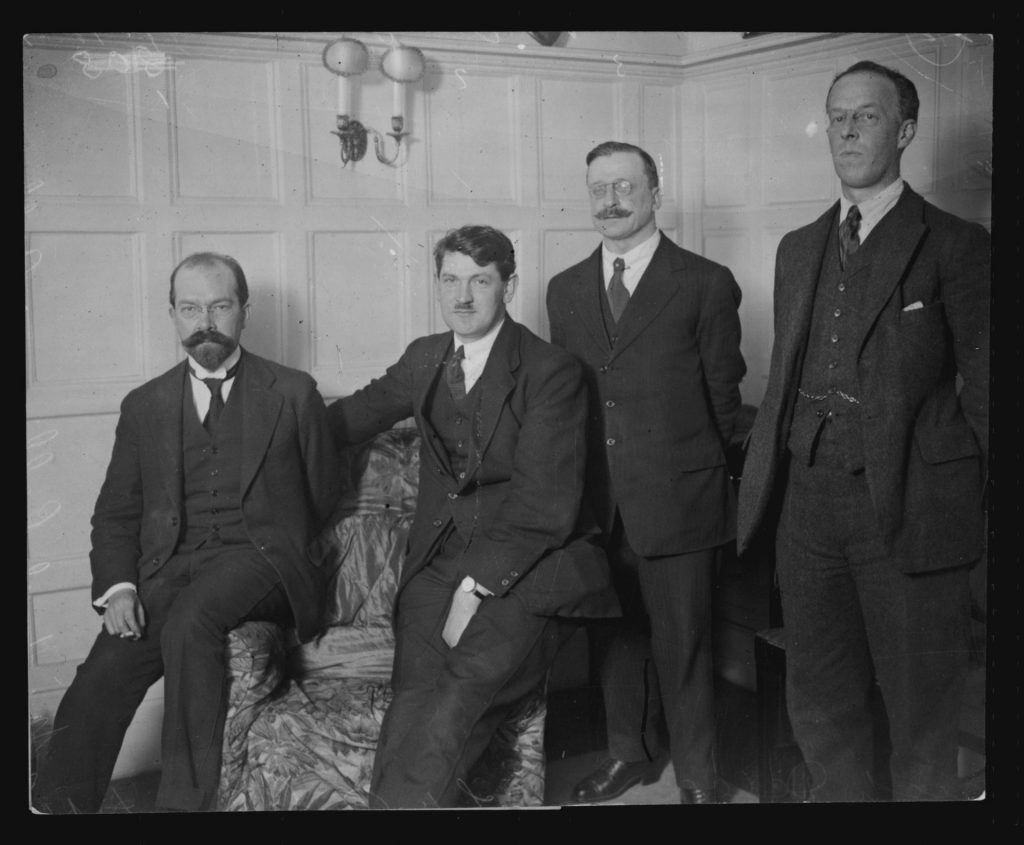
January 1916 Collins returns to Ireland and becomes a senior financial adviser to the leadership of the Irish Republican Brotherhood.
Easter 1916 During the Rising, Collins is stationed in Dublin Post Office. Around 500 people are killed. He is captured and interned in a prison camp in Wales.
1918 Collins is elected as a Westminster MP for Sinn Féin. The party’s MPs refuse to take their Westminster seats and instead convene an Irish parliament in Dublin. All but Collins are arrested. Collins organises the escape from Lincoln prison of Sinn Féin president Éamon de Valera by smuggling in a key inside a cake.
1919 In January an IRA unit murders two policemen in Tipperary, beginning the Irish war of independence. In September, Collins is made director of intelligence for the IRA. He creates The Squad, to kill anyone assisting the British. A British bounty of £10,000 is put on his head.
1921 Collins becomes engaged to Kitty Kiernan. They plan to marry in November of the following year. The Anglo-Irish Treaty is signed, creating the semi-autonomous Irish Free State. Collins is in favour of the treaty January.
1922 Collins becomes chairman of the Irish cabinet, a position comparable to prime minister, with Arthur Griffith as president. But some IRA elements reject the treaty, leading to vicious infighting that spirals into civil war.
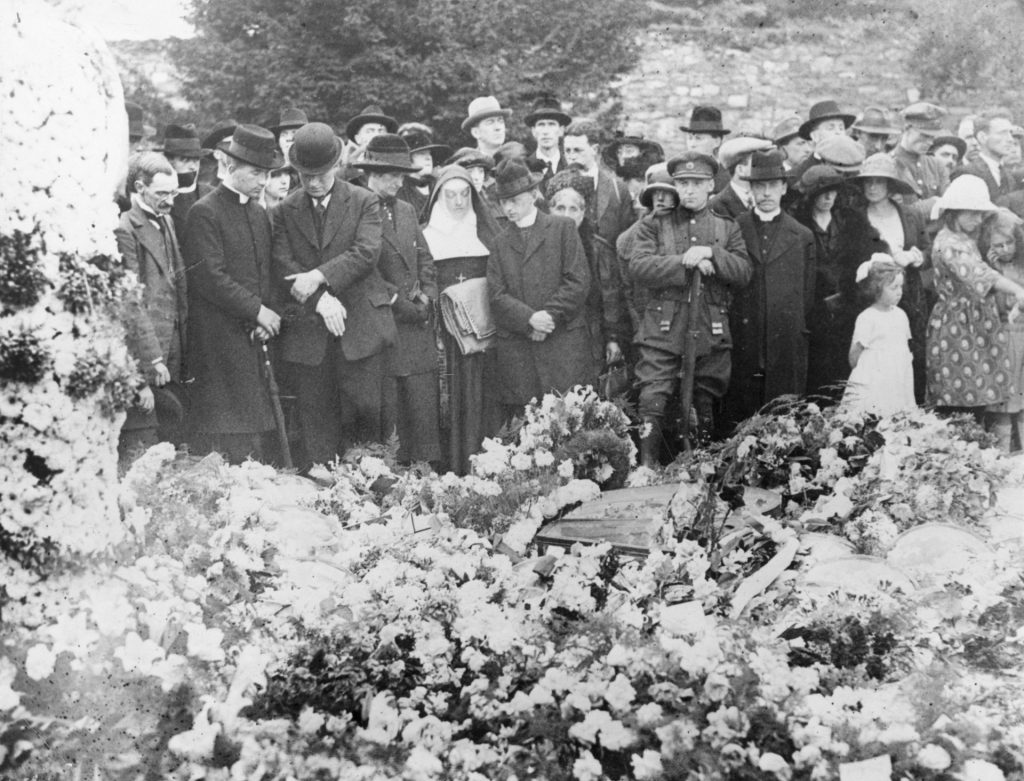
August 1922 Collins travels to Cork, which is associated with anti-treaty IRA elements. On August 22, he is assassinated. Half a million people attend his funeral at St Mary’s, Dublin.

